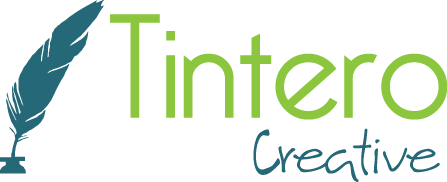 You may think that social media is all about posting cute pictures of your kiddos, sharing the latest meme, or sharing your latest adventure. But, I’m here to tell you that it’s actually part of a giant intricate web of data that you and I contribute to daily with everything we do online.
You may think that social media is all about posting cute pictures of your kiddos, sharing the latest meme, or sharing your latest adventure. But, I’m here to tell you that it’s actually part of a giant intricate web of data that you and I contribute to daily with everything we do online.
We don’t always like to look at charts and graphs, what people call data. We’d rather look at the cute picture of a puppy, right? While data may not be as sexy and viral of a topic as a puppy, it’s a big deal. It’s part of a bigger movement technological trend today that involves big data, artificial intelligence, machine learning, and other data-based technologies. It’s complex and can feel confusing, but it can be helpful to you.
What Kind of Data Can You Gather From Social Media?
On a basic level, you can gather a wealth of information to help you understand how effective your efforts are at reaching your audience on social media. Here’s an overview of the types of basic data you can get from some of the top powerhouses in social media:
- Page Likes: The number of individual people who have “liked” or followed your page.
- Post Reach: The number of unique people who have seen anything from your Page in the last seven days. This includes paid ads as well as organic reach.
- Engagement: The number of people who have interacted (liked, clicked, shared, or commented) with your posts in any way.
- Engagement Rate Percentage: The percentage of people who saw a post that interacted with it (like, share, comment).
- Demographics: Basic information on how much of your audience is male or female, ages, and geographic locations.
- Tweets: Total number of tweets your account has posted total.
- Tweet Impressions: The number of people who have seen your tweets (averages and Twitter breaks down tweet by tweet).
- Profile Visits: The number of people who have visited your profile.
- Mentions: The total number of times someone has mentioned your Twitter name.
- Followers: The number of followers you have.
- Tweets Linking to you: The number of Tweets attributed to you in Twitter Cards with URLs.
- Hashtag Performance – Identify the top performing hashtags you’ve used.
- Followers: The number of followers you have.
- Influential and Active Followers – Identifies the most influential people and most active people who follow you.
The list we just walked through shows some of the basics for three of the big giants in social media, but the possibilities are literally endless of what kinds of data we can gather from social media. We didn’t even dig into LinkedIn, Snapchat, YouTube, and others that provide valuable insights to their audiences as well.
Moral of the story: Social media provides a wealth of information, if you’re willing to pay attention to the data.
So, what kinds of data can we gather and understand from social media?
It’s clear that there are millions of connections we can find from analyzing social media data, but where is the application? What kind of things can we look at that are actually meaningful to us in real life? Let’s take a look…
Sentiment Analytics In Social Media
Sentiment analysis involves the study of emotions associated with words used and helps evaluate phrases for tone. You can learn a lot about if people are upset or if they are happy from sentiment analysis. Social media is a great place to gather this kind of understanding of your audience because people feel a freedom to rant or sing praises easily on social media. It’s a place to express your individual opinion and have your own platform. Therefore, sentiment analytics are a huge piece of what can be gathered from social media.
Interests
Every time you hit a thumbs up or a little heart, you are helping that social network understand what you like and are drawn to. Conversely, content that gets no love by the audience tells the social networks what people don’t like. We can understand users’ interest not just from individual post interactions, but also by what pages they like. You can learn that some people like 90’s rock music and listen to it five out of six days. You can also learn about what types of content will work best for your audience as you analyze how past and competitors’ content performs.
Heat Maps
Where does your eye go first? What parts of a page do you ignore and what parts to you like to click on? What types of buttons, fonts, colors, and graphics are likely to make you interact? Heat maps can track where your eye moves on a page to show programmers, marketers, and others in technology how to improve the user experience for maximum interaction. Understanding of these patterns impacts how websites get laid out, how email marketing campaigns are designed, and ultimately how technology is developed and evolves.
Understanding Demographics
Social media provides arguably one of the best sources of demographic data we’ve ever seen. We can now correlate demographic data with geographic data, purchasing trends, and even personal interests. We can connect data points that were once almost impossible to connect, and now it’s easier than ever.
Competition
Many analytics programs, including some native programs (like directly in Facebook Insights) allow you to compare and see how other pages are performing. While a simple practice of observing your competitors pages and content will help you gauge how you stack up, putting these pages on your radar from an insights standpoint will allow you to see a few more details on what is going on. Some analytics programs will even give you more quantifiable numbers on what your competitors are doing.
Competitive intel is incredibly important as you examine how far ahead (or far behind) your brand is. You can see where you need to beef up your social media strategy. You can also see what they are and are not doing so that you can see where your biggest opportunities are to gain attention from a similar type audience.
Hey, but what about…..________________ (fill in the blank)?
The reality is that the possibilities are actually endless with the types of correlations and themes we can use data for. We’ve already established that social media is a key resource for gathering data, and with so much data being put out on social media platforms each hour, you can imagine the infinite types of ways you could use data from social media!
Data is growing more and more relevant, tangible, and now vital in today’s world. When you consider strategic marketing, data needs to be at the core of it. That’s why, now more than ever, it’s important to find a marketing partner who understands data and how to apply data to a marketing strategy.
